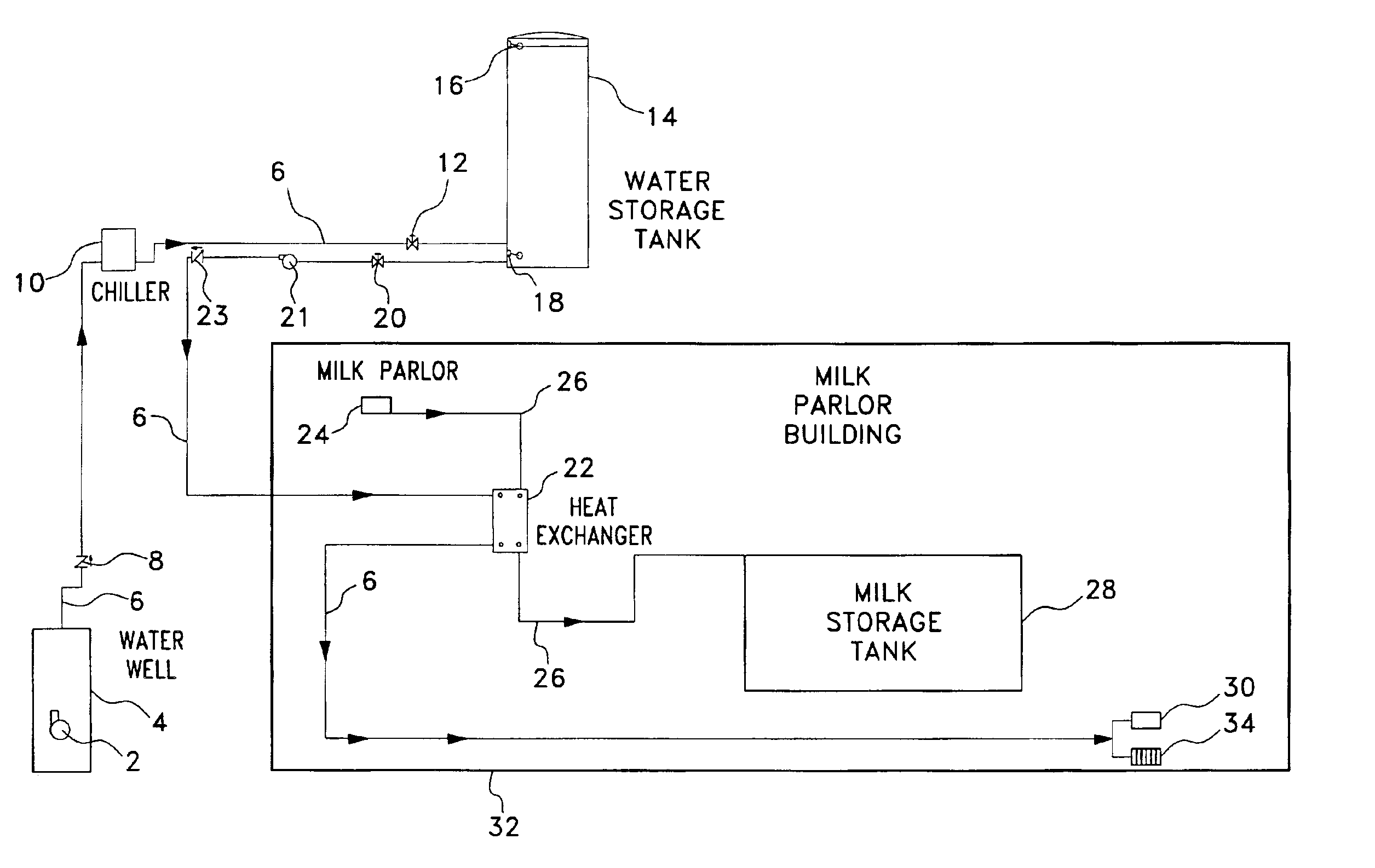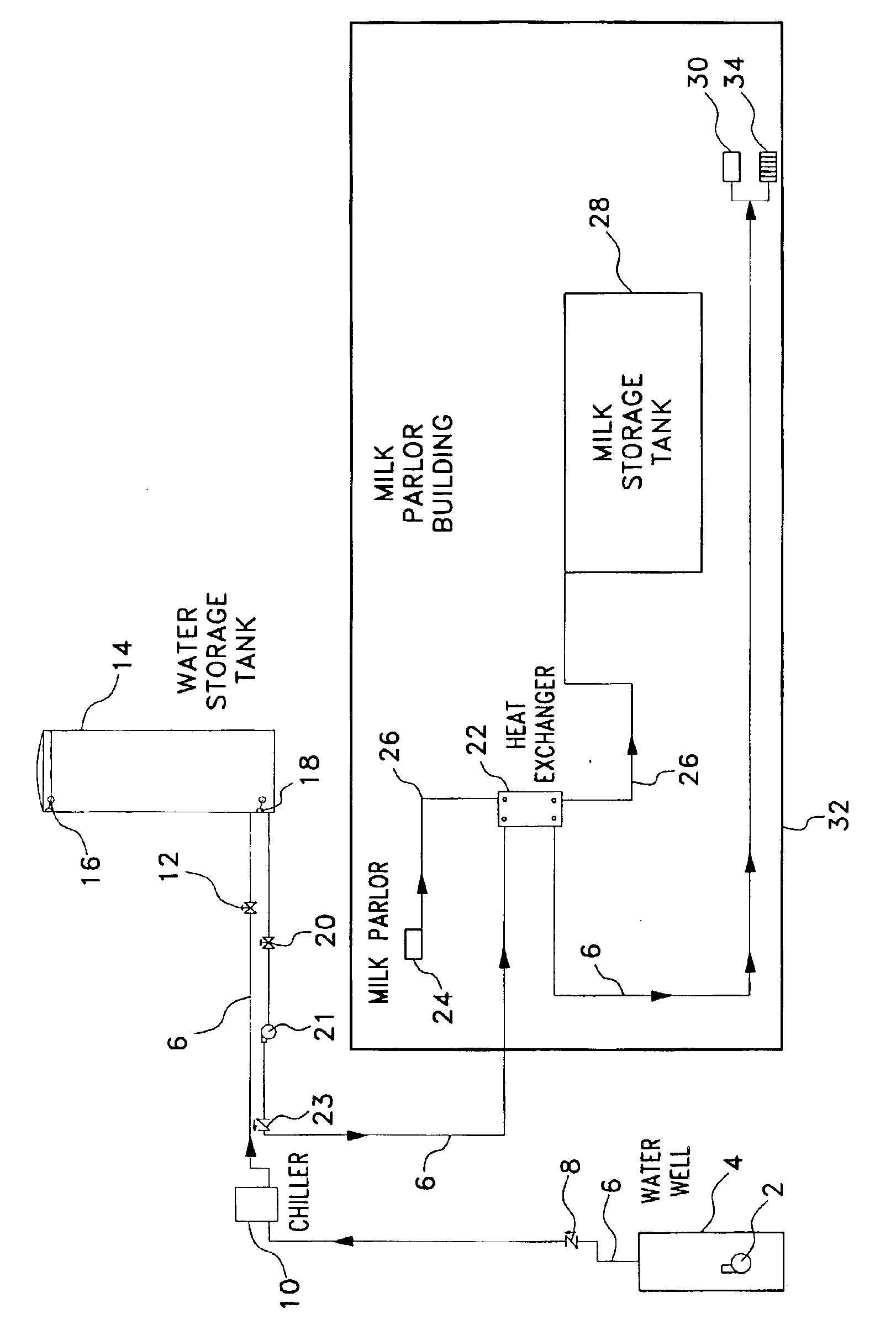Chilled water storage for milk cooling process
a cooling process and milk technology, applied in the direction of cooling fluid circulation, domestic cooling apparatus, lighting and heating apparatus, etc., can solve the problems of costly refrigeration equipment operation, prior art cooling process failure to achieve a simplified cooling process fully,
- Summary
- Abstract
- Description
- Claims
- Application Information
AI Technical Summary
Benefits of technology
Problems solved by technology
Method used
Image
Examples
example
The following example is illustrative of a possible application of the process of the present invention in a typical dairy farm and is not intended to be a limitation thereon. Table 1 depicts technical data for a hypothetical dairy farm. Table 2 depicts energy consumption in the dairy farm, which is based on a typical Time of Use (TOU) Rate Schedule. Table 3 depicts calculated energy savings which should be achievable using the present invention for the dairy farm based on the data provided in Tables 1 and 2.
TABLE 1Approximate # of Cattle Milked per Day780-790Approximate Total Milk Production per Day6,960 gal / dayMilking Period / Cycle24 hoursMilk Temperature Leaving Cow101 deg / F.Milk Bulk Storage Temperature38 deg / F.Process Cooling Delta Temperature63 deg / F.Allowable Time to Achieve Process Delta4-5 minutesMilk Main Process Cooling Equipment Capacity30 ton DXrefrigerationVolume of Chilled Water to cool Gallon of Milk1.5 gal Water:1 gal Milk
TABLE 2EnergyConsumptionEnergy CostEnergy Cos...
PUM
 Login to View More
Login to View More Abstract
Description
Claims
Application Information
 Login to View More
Login to View More - R&D
- Intellectual Property
- Life Sciences
- Materials
- Tech Scout
- Unparalleled Data Quality
- Higher Quality Content
- 60% Fewer Hallucinations
Browse by: Latest US Patents, China's latest patents, Technical Efficacy Thesaurus, Application Domain, Technology Topic, Popular Technical Reports.
© 2025 PatSnap. All rights reserved.Legal|Privacy policy|Modern Slavery Act Transparency Statement|Sitemap|About US| Contact US: help@patsnap.com


